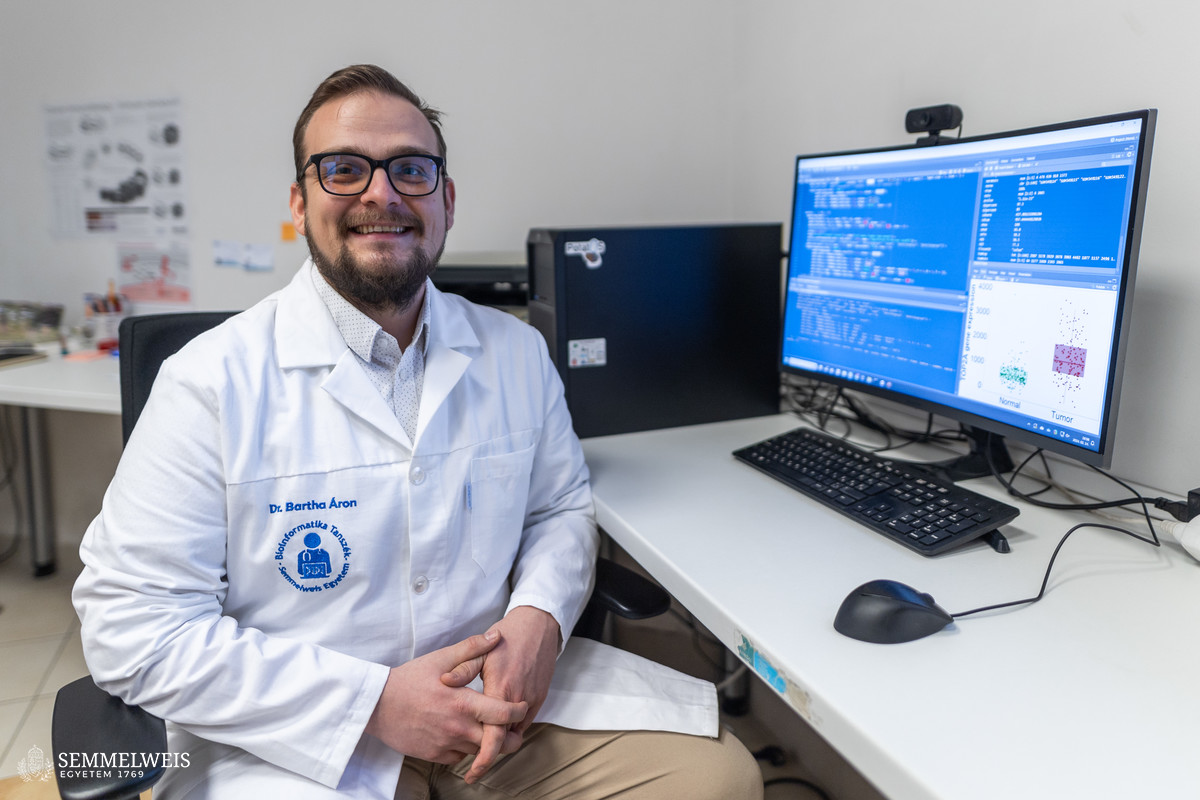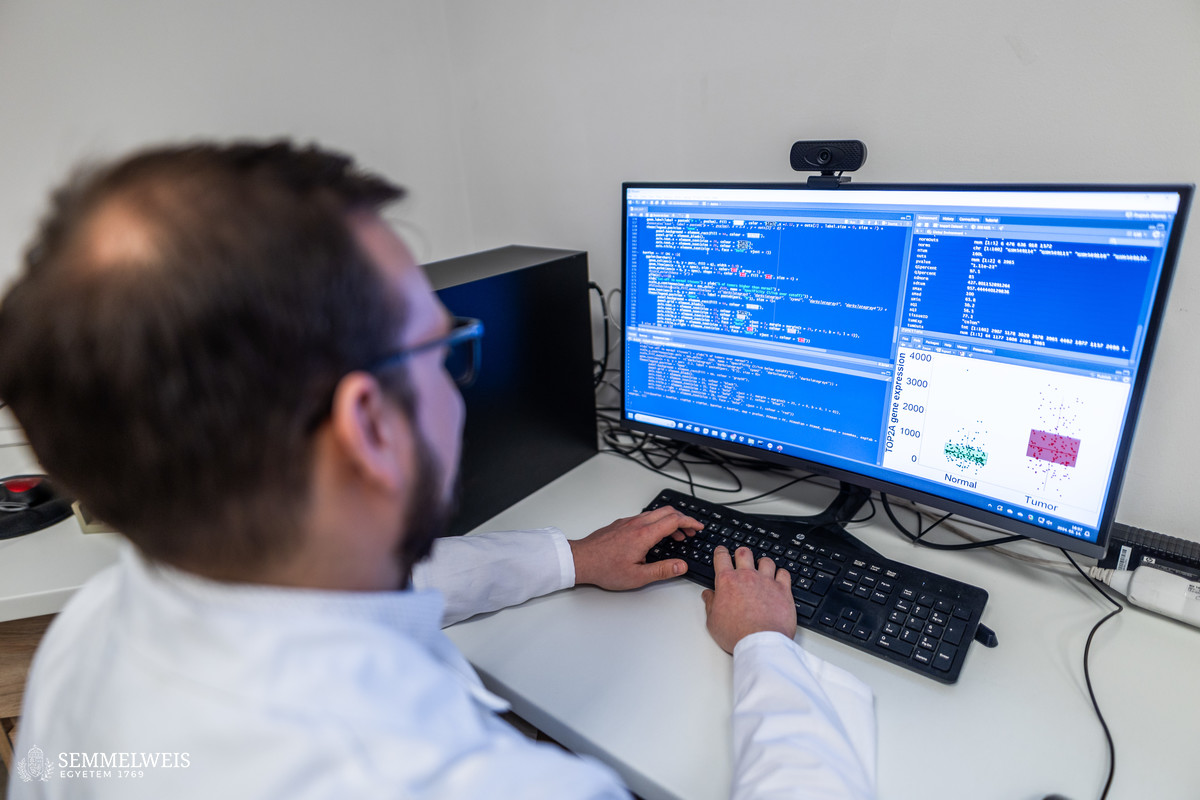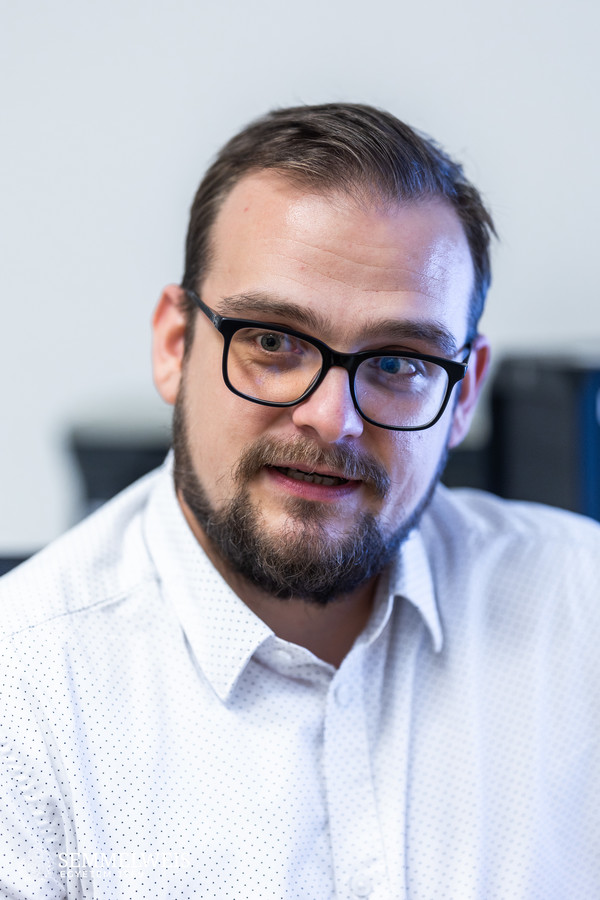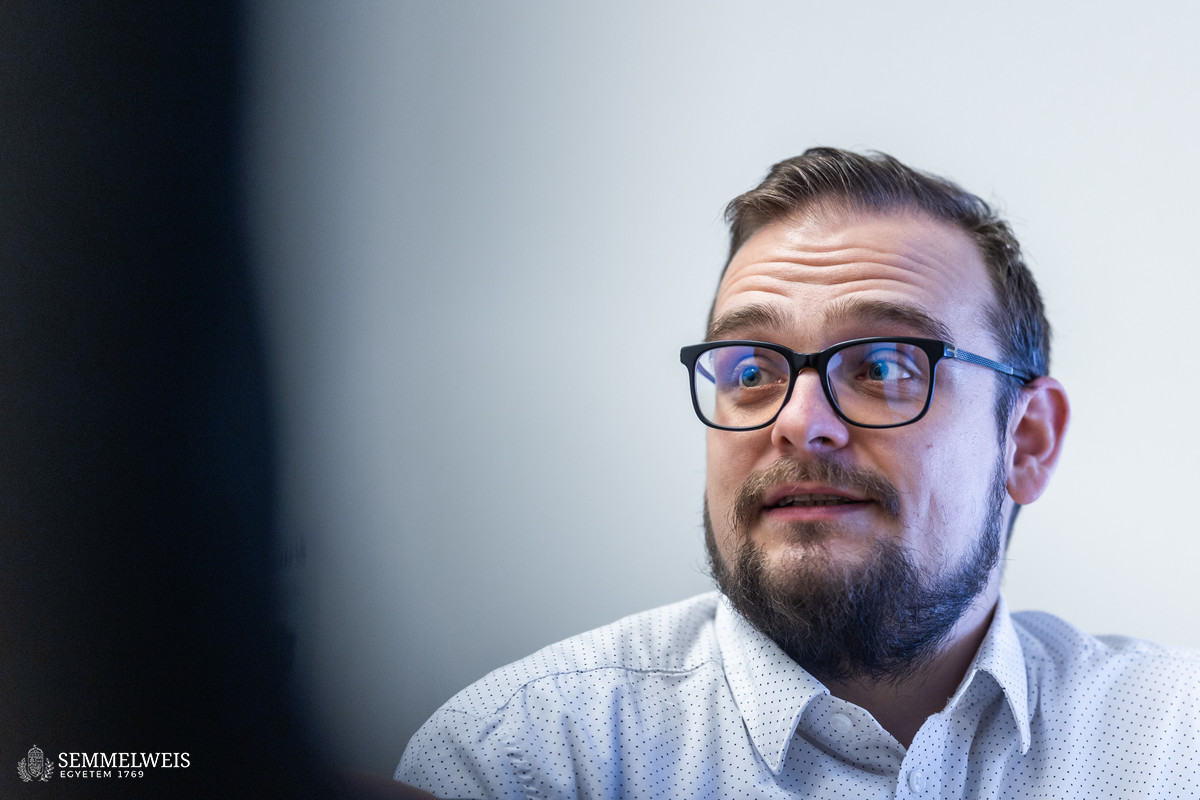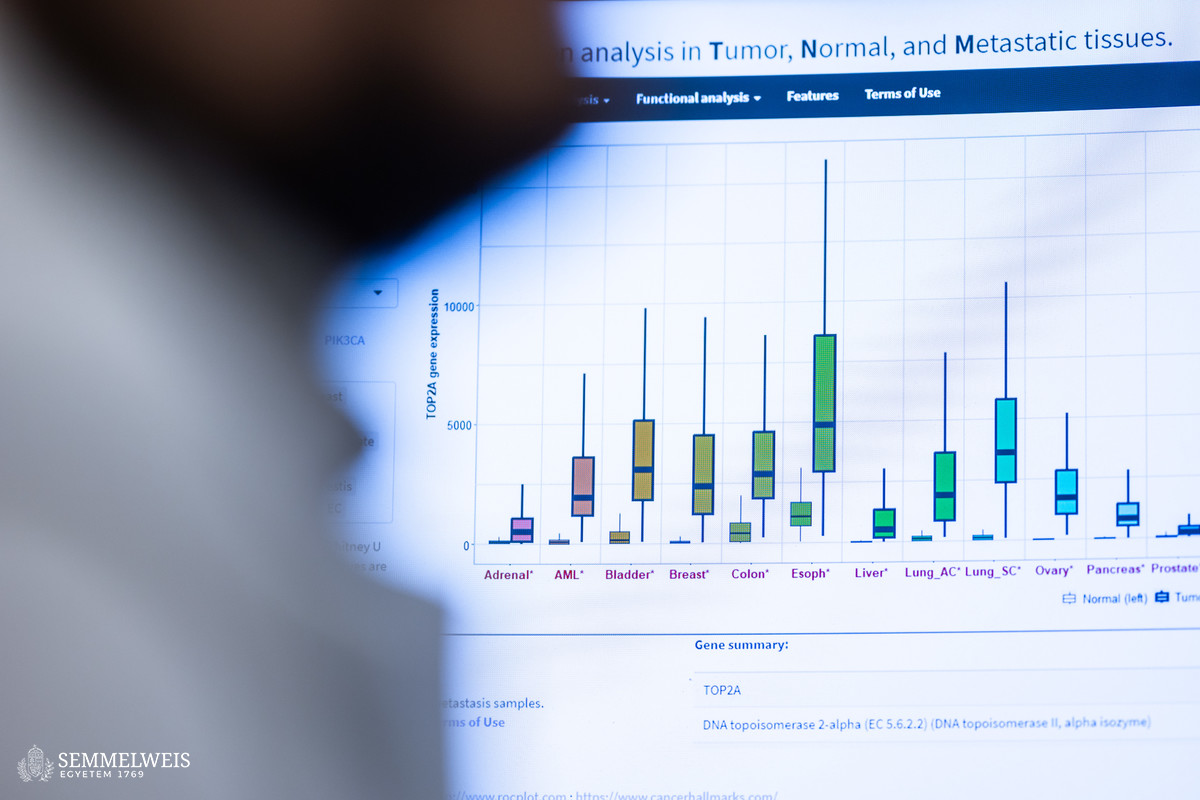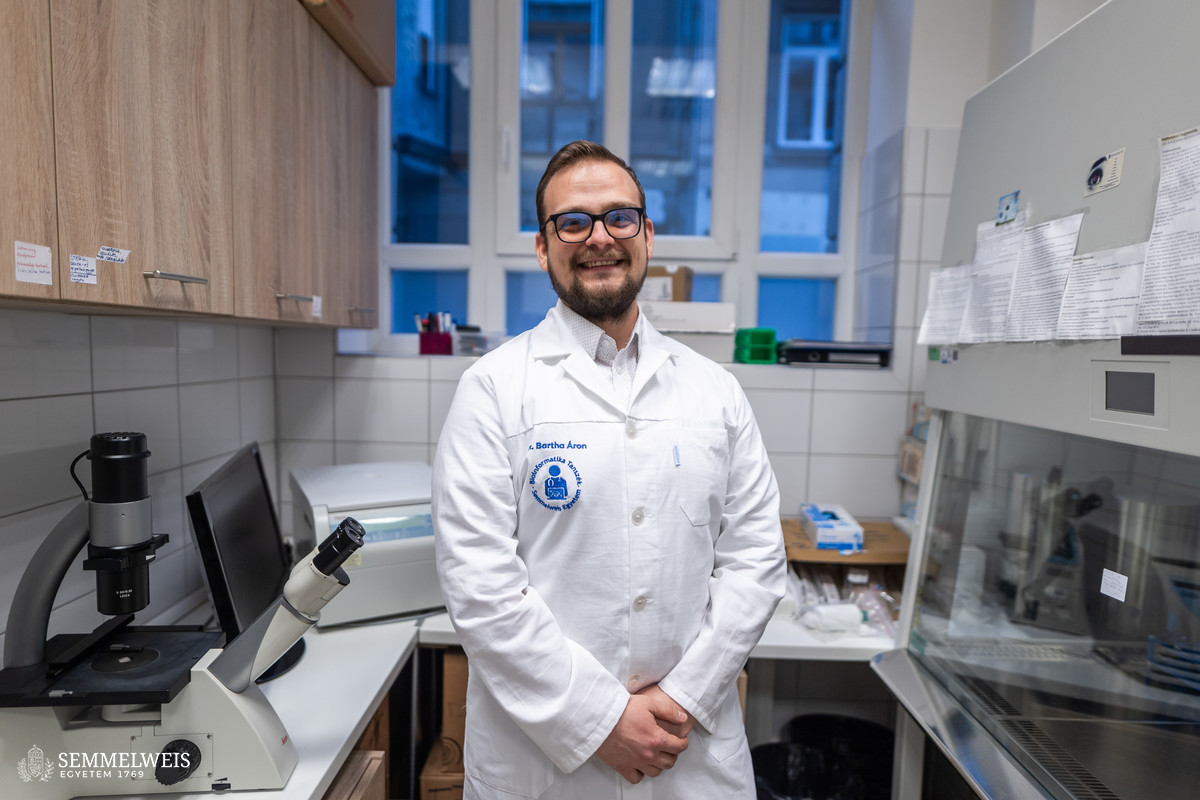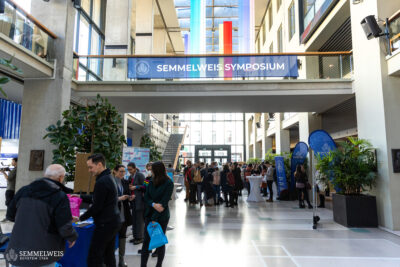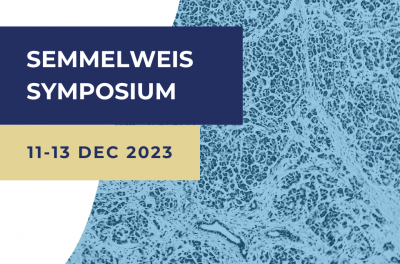“The essence of my research is basically to compare how many more or less of certain genes are present in tumor tissue compared to healthy tissue,” said Dr. Áron Bartha as he started his user-level presentation of the TNMplot.com application that he had developed and the complex theoretical background behind it.
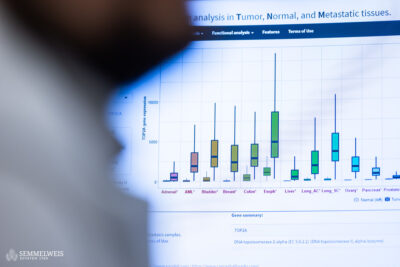 Researchers can choose a gene randomly, such as TOP2A and the pathography of colon adenocarcinoma, click the start button to begin the analysis on the interface, and after a short time a graphical image is displayed showing how many mRNAs of this gene are expressed in the tumor and how many in the normal sample. At the same time, the program performs a statistical analysis to show whether or not this difference is significant, he explained.
Researchers can choose a gene randomly, such as TOP2A and the pathography of colon adenocarcinoma, click the start button to begin the analysis on the interface, and after a short time a graphical image is displayed showing how many mRNAs of this gene are expressed in the tumor and how many in the normal sample. At the same time, the program performs a statistical analysis to show whether or not this difference is significant, he explained.
Dr. Áron Bartha graduated from the Faculty of Medicine of Semmelweis University in 2018. Since 2014 he has been working in the Cancer Biomarker Research Group at the Department of Bioinformatics, led by Professor Dr. Balázs Győrffy. He started his scientific career as a medical student, and his research in the Students’ Scientific Association (TDK) focused on breast tumor cell lines: he investigated the side effect profile of already approved drugs and the concentration at which these drugs can act as antitumor therapy. He began his PhD studies in 2018, when he started his current RNA sequencing-based bioinformatics research, which he has been conducting ever since. As he said, the fact that he has been working as a resident at the Pediatric Center from September 2023 has given him a lot of new responsibilities.
TNMplot.com is a web-based application that scientists can use to validate their own research, but also to brainstorm ideas at the beginning of their research and perhaps to test their hypotheses in this way, Dr. Áron Bartha stated. The underlying database of the web interface also includes RNA sequencing and gene chip-based data downloaded from international data repositories.
The TNMplot application has the ability to run two analysis options side by side, which is unique: the researcher has the opportunity to analyze a gene in two separate patient populations and on two completely different platforms. If that gene shows the same result in the different population and on the different platform, that is more likely to be of clinical or biological significance. He added that there were many web-based analysis programs around the world. Another reason why the application they have created is unique is that while other similar platforms have 20,000 or at most 30,000 samples, here the program works with around 60,000 samples.
Dr. Áron Bartha started working on the web project in 2018, and in order to build their database, they had to go through about 3000 publications and their documentation. “Next, my colleagues and I created the programming background for this, wrote the functions and algorithms that make it work, and together with my supervisor, Professor Balázs Győrffy, we wrote an English-language article that was published in an international journal in March 2021. This was the first major milestone of the project, and we are currently working on the next article,” he said, detailing the process.
I have always been interested in cancer research, and I knew already before university that I wanted to work on both the clinical and theoretical side of oncology.
– Dr. Áron Bartha said, explaining his motivation.
“A significant moment that moved me in this direction was the volunteer work I did during high school, as I chose a hospice,” he emphasized, adding that from then on, he had been interested in oncology. The person who made the first and most important impression on him on his path to medicine was his mother, who, as a general practitioner, always treated her patients with humility and great professionalism. He was also greatly influenced by his grandfather, whose microscope he had the opportunity to look into as a child. His grandfather had started to do research, but in the system that prevailed at that time, he had no opportunity to develop it in his chosen field, which he, his grandson, now does, Dr. Áron Bartha said.
 When he joined the Department of Bioinformatics, he started to learn the methodology of the field and how to apply it, and later expanded his knowledge by attending courses abroad. Subsequently, he became a visiting researcher at New York University (NYU), where he worked on the analysis of proteomic data, rather than gene expression data, comparing post-translational modifications of proteins in cancerous and healthy tissues.
When he joined the Department of Bioinformatics, he started to learn the methodology of the field and how to apply it, and later expanded his knowledge by attending courses abroad. Subsequently, he became a visiting researcher at New York University (NYU), where he worked on the analysis of proteomic data, rather than gene expression data, comparing post-translational modifications of proteins in cancerous and healthy tissues.
He stresses that he is grateful to his supervisor, Dr. Balázs Győrffy, Head of the Department of Bioinformatics, from whom he received a lot of help and inspiration. He added: “Besides theoretical work, I always knew that at some point in my life I would eventually get to work with patients.” In fall 2023, he started his residency in pediatrics.
I hope to have points in my work where clinical work and research come together.
In his experience, oncology is a field where there can be convergence.
In addition to his many activities, programming and data entry – in spite of giving him something to do constantly and there being a fair number of errors to correct – help him unwind and focus. He considers building a website a creative activity; he likens the elements to building blocks and says that if you like playing with Lego, you can imagine it in a similar way, but in a slightly more complex form.
As an indication of the success of his work so far, the citation count for the article he wrote with Dr. Balázs Győrffy is well over 400 and the web application has been used in over 100 countries, according to Google Analytics data, with the majority of users coming from China and the United States.
Dr. Áron Bartha said his long-term goal was to become a pediatric specialist and then to qualify as a pediatric hemato-oncologist, so he would have a number of opportunities to apply targeted therapies, and he could also put his researcher’s mindset to good use in these areas.
“We are currently in the process of developing a new feature: at this point, the software can compare normal and tumor tissue, but it cannot yet take into account clinical variables such as the stage of a particular type of tumor. We are now working on making it possible for the application to analyze data based on this. In the long term, I would like researchers to be able to look not only at mRNA data here, but also at what it all looks like at the protein level because proteins are key to understanding cellular processes,” he explained.
The Semmelweis Innovation Award is granted each year by Semmelweis University in recognition of the research and development as well as innovation work done by researchers, PhD and TDK students who have developed new scientific research results and innovative solutions in the course of their research work related to the university. The award comes with a cash prize and is announced each year in three categories.
The call for applications for the 2024 Semmelweis Innovation Award has been published.
Deadline for submission: Sunday, June 30, 2024
The call for applications and the application form are available on the university’s website.
Róbert Tasnádi
Translation: Dr. Balázs Csizmadia
Photos by Bálint Barta – Semmelweis University
